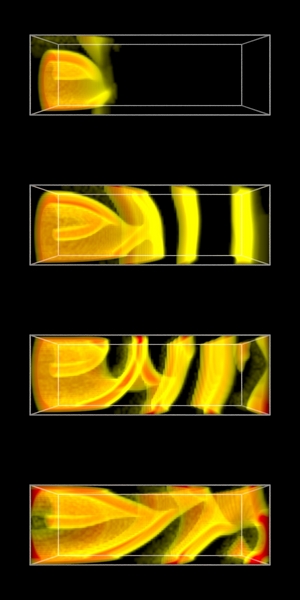Computational study of helix wave formation in active mediaPetteri Kettumen 1, Paul D.Bourke2, Hajime Hashimoto 3,Takashi Ameniya 4, Stefan C. Müller 5, Tomohiko Yamaguchi 1,6.
Mathematical and Computer Modelling, Volume 41, Issue 8, pages 1013-1020, April-May 2005. 1 Nanotechnology Research Institute, National Institute of Advanced Industrial Science and Technology, AIST Central 5-2, Higashi 1-1-1, Tsukuba, Ibaraki 305-8565, Japan. 2 The Centre for Astrophysics and Supercomputing, Swinburne University of Technology, P.O.Box 218, Hawthorn, Victoria 3122, Australia. 3 The National College of technology, Department of Electrical Engineering, Tokiwadai 2-14-1, Ube 755-8555, Japan. 4 Graduate School of Environmental and Information Sciences, Yokohama National University 79-7 Tokiwadai, Hodogaya-ku, Yokohama 240-8501, Japan. 5 Institut fûr Experimentelle Physik, Otto-von-Guericke-Universität Magdenburg Universitätsplatz 2, D-39106 Magdeburg, Germany. 6 Graduate School of Pure and Applied Science, University of Tsukuba 1-1-1, Tennoudau, Tsukuba 305-8577, Japan.
|
